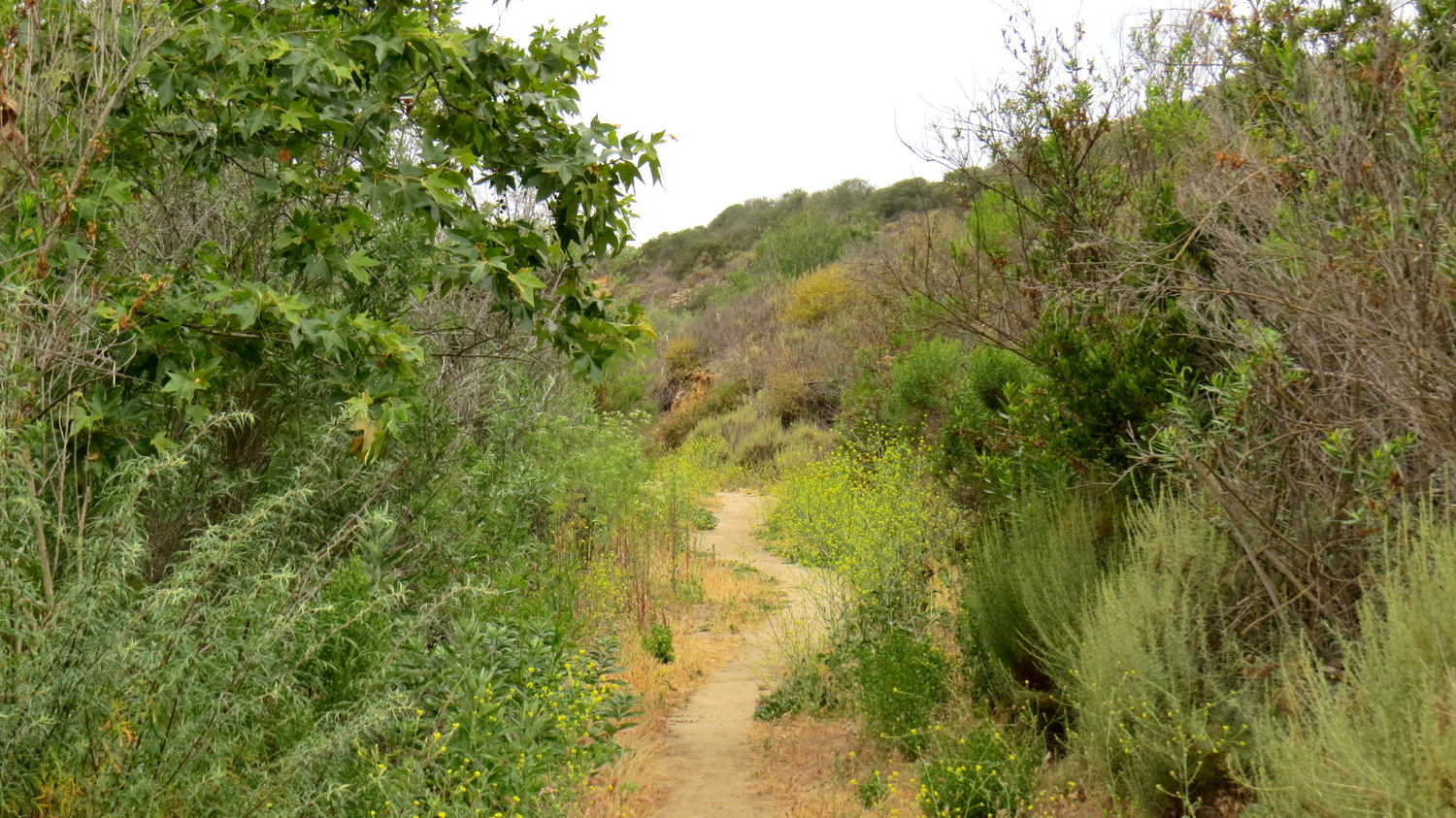This moderate route through a trio of coastal canyons offers a nice respite from the crowded confines of suburban North County. Along the way, you’ll enjoy well-preserved stands of aromatic coastal sage-scrub before reaching an impressive grove of California sycamores along the banks of Gonzales Creek.


The sparsely visited trio of canyons contained within the City of San Diego’s Gonzales Canyon Open Space Preserve contains some of the best coastal sage-scrub and riparian habitat in the region. The preserve seems to have also somehow escaped notice from hikers who perhaps prefer other more well-known nearby open spaces. So for those looking for a bit of early morning solitude, Gonzales Canyon is a fine alternative.

Starting from the off-leash dog park atop the mesa, find a gravel access road leading east toward a shallow canyon. Almost immediately on the right, you’ll find a sign indicating the Torrey Pines Loop Trail (herein referred to as the TPLT for brevity’s sake). Join that trail and commence a descent through fragrant black sage and California sagebrush. These two principal species within the coastal sage-scrub community will grace you with their pungent aromas throughout the route, while invasives such as fennel and eucalyptus will add their volatile scents to the air at a handful of spots.

The trail wraps around a ravine and begins a generally gradual ascent that has a few steep and sandy sections necessitating a bit of care. The trail continues to descend down this side canyon toward a grove of massive sycamores that indicate the water course of Gonzales Canyon. You’ll pass another signed junction beneath a scrub oak – keep right to continue.

At .6 mile, you’ll reach another junction with a continuation of the TPLT. The continuation heads off to the left via a use trail, wraps around the base of the mesa to reach a second side canyon to the west. This will ultimately be your return route, and you can head back if you’re looking for a shorter hike. For those continuing on, head straight toward the sycamore grove.

You’ll come to a second junction in another 50 yards or so. Remember this junction, because you will later return here. Turn right here to commence a second loop around Gonzales Canyon creek’s narrow riparian strip. You’ll get a snapshot of how abruptly water can change the habitat; on your right, scrub oak and other shrubs interspersed with thickets of poison oak dominate the hillside. On your left, dense growths of water-hungry willows and mulefat indicate the boundary of the riparian zone. Continue east for .3 mile to another junction and turn left to cross over the creek bed.

Just beyond the creek bed, take the next left to follow the north bank of the creek west on the Lagoon Trail. On your left, jungle-like growths of poison oak climbs the trunks of towering sycamore trees while an appealing mixture of sage-scrub, coastal cholla, and dudleyas line the hillside on the right. Keep your eyes peeled for the rare coastal barrel cactus, which lingers unobtrusively beneath more common shrubs.
The trail reaches yet another junction beneath a grove of eucalyptus trees. This is likely the original homestead site of Levi Gonzales, a Portuguese immigrant who settled the canyon in the late 1800s. Eucalyptus trees, which are non-native species commonly planted by settlers as windbreaks, often offer hints about the locations of old settlements.

Turn left here to cross the creek a second time and make an immediate left thereafter to continue east. You’ll close the loop after 2 total miles of travel; along the way, keep your eyes peeled for the rusted remains of some old ranch equipment. Once you reach the junction where you originally turned to follow the riparian strip east, turn right and then right again to return to the TPLT.

Once back on the TPLT, wrap around the mesa to enter the side canyon. A denser green of willows, reeds, and elderberry trees marks the course of a tributary that has cut a deep gouge through the center of the canyon. From here, a short but steep climb leads you out of the canyon to return to the dog park. Along the way, you’ll pass the only Torrey pines (likely planted) on the route. Once you reach a fence boundary for the high school, you can cross the dog park to return to the parking area.
Tags: Gonzales Canyon, San Dieguito River, Torrey pines, Torrey pines high school, Torrey pines loop trail











